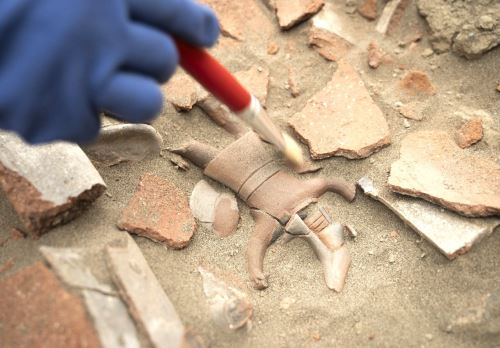13:19 | Casma (Ancash region), Nov. 19.
An astronomical structure 1,000 years older than the famous solar observatory of Chankillo (built around 250 BC)—considered the oldest in the Americas—has been discovered in the archaeoastronomical complex, located in Casma Valley on the coast of the Ancash region, by Peruvian archaeologists.
This was revealed by archaeologist Ivan Ghezzi Solis, director of the Executing Unit 010 Chankillo.
The researcher stated that this valuable archaeological discovery could redefine the understanding of astronomical development in pre-Hispanic Peru.
"There are structures that apparently had an astronomical function long before Chankillo. They have an astronomical orientation and feature different construction techniques, using stone, mud, and adobe," he explained.
Ghezzi made the announcement during the presentation of new and significant scientific advances regarding the archaeoastronomical complex located in Casma Valley on Ancash region's coast. It is considered astronomy's oldest expression in the Americas.
He indicated that the excavations took place between April and November, revealing that this system not only tracked solar movements through the Thirteen Towers but also lunar phenomena, expanding the understanding of astronomical practices by the ancient civilization.
Discovery of a moon-aligned corridor
The archaeologist stated that another significant finding is a corridor aligned with the moon, which complements the complex's known solar function.
According to Ghezzi, this corridor faces west, toward the fortified temple, and aligns with the moon.
"We now have a richer interpretation of Chankillo as a site for both solar and lunar observations," he noted.
Ceremonial vessel
The researcher confirmed that a large ceremonial vessel over one meter tall was found in the access area to the solar observatory, intentionally broken as part of a ritual act.
The piece has a globular base decorated with stepped motifs typical of the site's architecture and features clay figurines of warrior characters in combat positions.

"We see a wonderful integration: astronomy and combat. These figures were leaders who possessed precise astronomical knowledge and, at the same time, were successful warriors," Ghezzi explained, noting that the figurines appear in pairs, suggesting ritual duels.
The discovery of this ceremonial vessel had already been announced in August.
The Executing Unit 010 Chankillo reported that the fragmented sculptural vessel features depictions of warriors in combat. It was found at the entrance to the Solar Observatory of Chankillo Archaeoastronomical Complex.
As reported by Andina News Agency, the Executing Unit 010 Chankillo detailed that the piece, belonging to the Patazca style, was found in a space of profound ceremonial value, highlighting its symbolic significance within the religious practices associated with the Sun.
The researchers assert that the depiction of warriors is linked to the Chankillo building, known as the Fortified Temple, which served as the political, military, and ritual center for Chankillo's elites.
This discovery confirms that ritual objects not only had a ceremonial purpose but also conveyed messages of identity and authority.
These discoveries establish Casma as a future ancestral astronomical destination of global significance.
The Executing Unit identified 12 new astronomical points in Casma and Nepeña Valleys, which will be proposed to UNESCO for recognition as World Heritage sites.
Valorization of Chankillo
Ghezzi announced that efforts will be made in the coming years to extend the World Heritage designation to other sites connected to Chankillo's astronomical system.
It is estimated that the process of international recognition for the 12 additional points could be completed within five to six years.
In two to three years, Chankillo's first sector will be opened to the public, featuring tourist infrastructure, a visitor circuit, and basic services.
The Executing Unit 010 Chankillo continues the restoration of the Thirteen Towers and the observatory building. It aims to valorize a unique site that, with over 2,300 years of history, continues to reveal secrets about astronomical knowledge, social organization, and the rituals of one of the most advanced cultures of ancient Peru.
Chankillo is a ceremonial center recognized by UNESCO as a World Heritage site in 2021. Its Thirteen Towers form the oldest solar observatory in the Americas and the ancient world’s only complete solar horizon calendar.
The complex also includes an impressive 300-meter-long fortification, reinterpreted as the Fortified Temple.
(END) MRV/MAO/MVB
Publicado: 19/11/2025